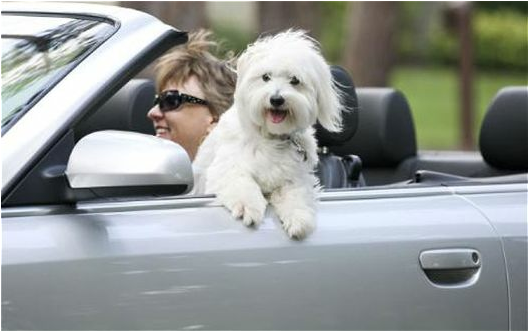Pets, driving and the elderly are a toxic mix says UAB study
Mon, 05/06/2013 - 21:02
Are elderly drivers unduly called out for their behind-the-wheel antics? Some may think so, but a recently published university study reveals that there is some truth and much concern about the way some elderly drivers comport themselves while driving.
Distracted driving by novice drivers may indicate cell phone use while operating a vehicle, but for mature drivers the evidence points to a different matter, that of a canine kind: their dogs.
Distracted While Driving
The University of Alabama at Birmingham published a study in May 2013 that looked at the driving habits of 2,000 licensed drivers aged 70 and older. The study, conducted in the Clinical Research Unit at the university’s Department of Ophthalmology, found that those who always drove with their pets were twice as likely to be distracted while driving than those who never drove with one.
The university sample of 2,000 elderly drivers surveyed people that live at home, not drivers residing in nursing homes or assisted-care facilities. Of the individuals surveyed, 691 reported owning pets.
“Adding another distracting element, especially an active, potentially moving animal, provides more opportunity for an older driver to respond to a driving situation in a less than satisfactory way. Regulations in this area might be warranted, particularly if our findings are replicated by others.” – Gerald McGwin, Ph.D., professor in the Departments of Epidemiology, Ophthalmology and Surgery and senior author of the studyThe researchers then asked survey participants about driving frequency with their pets, pinpointing those that said their pet always rode with them. All survey participants were subjected to visual sensory and higher-order visual processing testing. Gerald McGwin, Ph.D., a professor in the Departments of Epidemiology, Ophthalmology and Surgery and senior author of the study noted, “this was the first study to evaluate the presence of pets in a vehicle as a potential internal distraction for elderly drivers.” Elderly drivers, when faced with “increased cognitive or physical workload while driving,” have demonstrated slower response times when compared to drivers in other age groups. With a pet always present, the researchers found that senior drivers are twice as likely to be distracted while driving than those who drove with a pet on occasion or not at all. McGwin noted that the university’s first-of-a-kind findings, if replicated elsewhere, might lead policy makers to pass legislation to control this behavior. Current Driving Legislation Hawaii is currently the only state that expressly prohibits drivers from holding a pet on their lap reports USA Today. In New Jersey, NJSPCA officers can stop a driver for improperly transporting an animal. In California, a bill that would have fined drivers $35 for sharing a seat with a pet was vetoed by then governor Arnold Schwarzenegger in 2008. A study conducted by AAA noted that a 10-pound dog riding unrestrained would yield 500 pounds of pressure in a 50 mile per hour crash. For an 80-pound dog, 2,400 pounds of pressure would be felt in a 30 mph crash. Distracted driving is recognized as a significant contributor in crashes including fatal accidents. With the Federal Highway Administration this month offering a preliminary report estimating a 5.3 increase in traffic deaths in 2012 — reversing a trend of steady year-over-year decreases — policymakers might consider legislation requiring pets to ride tethered in passenger vehicles. It is a state-by-state matter, however, something the federal government can recommend as part of its overall effort to reduce distracted driving. Resources: Driving with the dog not a good idea for seniors – University of Alabama at Birmingham Author Information Matt Keegan owns the online Auto Trends Magazine, a website covering new models, industry trends and news. He is also the automotive category expert writer for Answers.com.

[{"target_id":"255220","alt":null,"title":null,"width":"529","height":"333","url":"\/sites\/default\/files\/articles-images\/00\/pets-driving-and-the-elderly-are-a-toxic-mix-says-uab-study.png"}]




